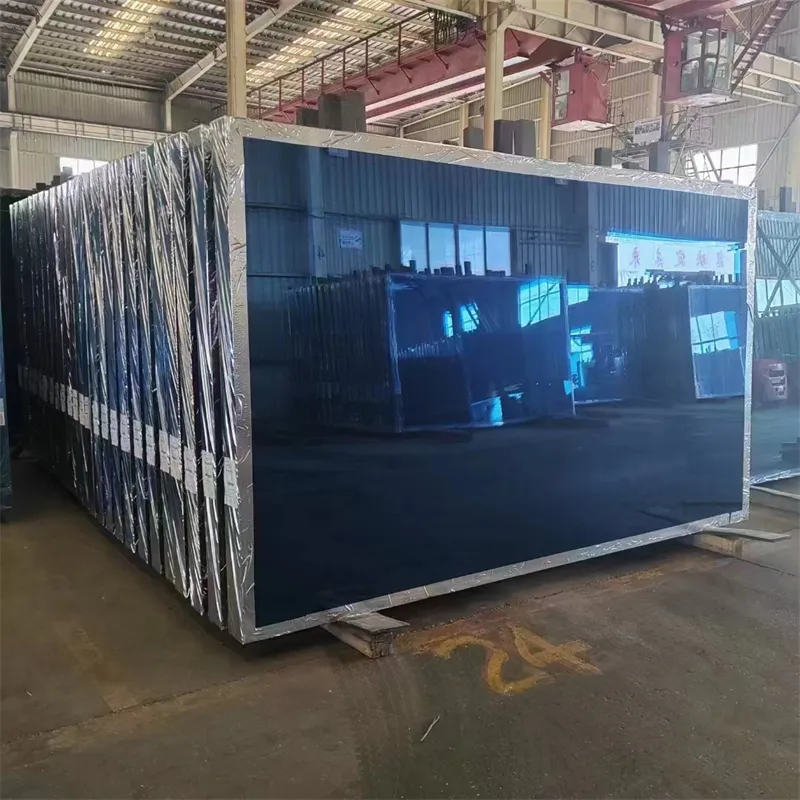Dec . 04, 2024 19:21 Back to list
Exploring the Benefits and Applications of Laminated Float Glass in Modern Architecture
Understanding Laminated Float Glass A Comprehensive Overview
Laminated float glass is a remarkable innovation in the glass industry, offering enhanced safety, durability, and aesthetic appeal. As a popular choice for various applications, this type of glass has gained significant traction in both residential and commercial markets. This article explores what laminated float glass is, its manufacturing process, advantages, applications, and future trends.
What is Laminated Float Glass?
Laminated float glass consists of two or more sheets of float glass that are bonded together using a layer of polyvinyl butyral (PVB) or ethylene-vinyl acetate (EVA). This interlayer serves multiple purposes, including adhesion, sound insulation, and UV protection. The usage of float glass, known for its smooth and uniform surface, enhances the visual clarity and aesthetic quality of the final product.
Manufacturing Process
The manufacturing process of laminated float glass can be broken down into several key steps
1. Float Glass Production The first step is creating high-quality float glass. In the float glass process, molten glass is floated on molten tin to produce a flat, smooth surface. This glass is then cooled and cut into sheets of desired sizes.
2. Interlayer Preparation Before lamination, the chosen interlayer material (PVB or EVA) is prepared and placed between the sheets of glass. This interlayer is transparent and contributes to the glass’s overall performance.
3. Laminating Process The glass and interlayer are then subjected to heat and pressure in an autoclave, which removes air bubbles and ensures a strong bond. The autoclaving process also enhances the glass's strength and durability, making it capable of withstanding impact and varying environmental conditions.
4. Finishing Touches After the lamination process is complete, the laminated glass is cut and shaped as required for specific applications.
Advantages of Laminated Float Glass
Laminated float glass offers numerous advantages that make it a preferred option in various settings
- Safety One of the standout benefits is safety. In the event of breakage, the interlayer holds the glass fragments in place, minimizing the risk of injury.
laminated float glass

- Sound Insulation The interlayer also provides excellent sound insulation, making laminated glass an ideal choice for urban environments where noise reduction is a priority.
- UV Protection Laminated glass blocks up to 99% of harmful UV rays, protecting furniture, flooring, and artwork from fading over time
.- Aesthetic Flexibility Available in different tints and thicknesses, laminated float glass can be customized to fit the aesthetic and architectural needs of any project.
- Energy Efficiency The insulating properties of laminated glass contribute to energy efficiency, helping to maintain consistent indoor temperatures and reduce heating and cooling costs.
Applications
Laminated float glass finds widespread use in various applications, including
- Architecture In modern architecture, laminated glass is used for facades, skylights, and curtain walls, providing both structural integrity and design flexibility.
- Automotive Laminated glass is a standard in car windshields, offering safety features and protecting passengers in the event of an accident.
- Furniture The elegance of laminated glass makes it a popular choice for tabletops, displays, and shelving in contemporary furniture design.
- Interior Design Homeowners and designers utilize laminated glass in staircases, railings, and shower enclosures, enhancing both safety and style.
Future Trends
As technology continues to advance, the laminated float glass market is poised for growth. Innovations in interlayer materials promise to enhance features such as impact resistance and energy efficiency. Additionally, the increased emphasis on sustainability is driving the development of eco-friendly and recyclable glass solutions.
In conclusion, laminated float glass is a versatile and essential component in modern design and construction. Its safety features, aesthetic appeal, and energy efficiency make it a preferred choice across various industries. With ongoing advancements and a focus on sustainability, laminated float glass is likely to remain a significant player in the glass market for years to come.
-
Safety and Style with Premium Laminated Glass Solutions
NewsJun.24,2025
-
Reinvents Security with Premium Wired Glass
NewsJun.24,2025
-
Premium Float Glass Line for Modern Architecture
NewsJun.24,2025
-
Low Emissivity Glass for Energy-Efficient Architecture
NewsJun.24,2025
-
High-Performance Insulated Glass Solutions for Modern Architecture
NewsJun.24,2025
-
Elevates Interior Style with Premium Silver Mirror
NewsJun.24,2025
Related PRODUCTS














